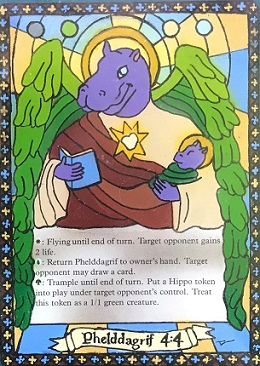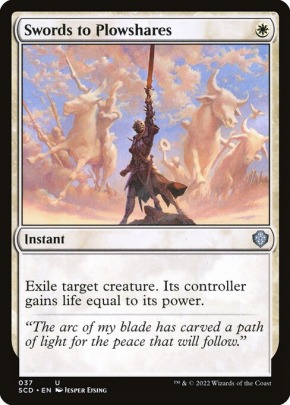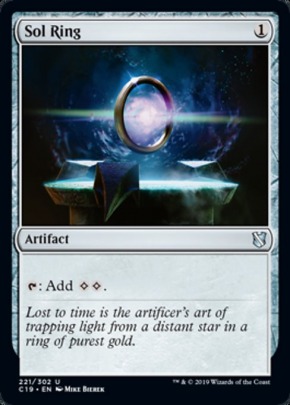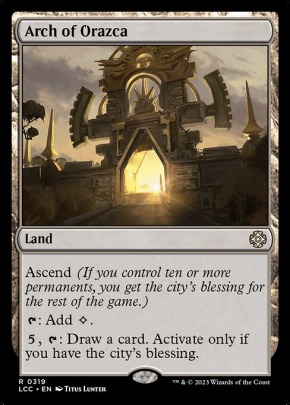Show Weakness to Hide Your Strength

Phelddagrif is the exploitation of multiplayer dynamics. He is politics become a weapon. He is capable of winning at the most competitive Grand Prix tables, while still playing fair at the kitchen table. Played badly, he is almost incapable of winning. Played well, he is almost incapable of losing.
Core to the power of Phelddagrif is this simple maxim, from the card Disruptive Pitmage – "Show weakness to hide your strength." Nothing about this deck looks like it should work. Not even casually, let alone competitively. It breaks all the rules of deckbuilding. In a format where decks are recommended to have many avenues to victory, it barely has any. In a format where 1:1 trades are considered a necessary evil at best, more than half its nonland cards do just that. In a format where commanders can be incredibly powerful, it runs a commander famous for being the head of decks with no desire to win at all.
No experienced player of commander could reasonably feel threatened by Phelddagrif.
Which is exactly why it can win over, and over, and over.
This guide isn't designed to simply give you a decklist, a few tips, and wish you luck. A solid understanding of how the deck works is critical to building it, personalizing it, and playing it. This deck does not give you a safety net – one wrong move can cost you a game, and nearly every lost game can be attributed to a mistake you made. Believe me, I've made many, many mistakes, and sometimes the solution wasn't apparent until hours later. Consider this guide an anthology of all my mistakes, and how you can save time and avoid them. But no matter how long you play Phelddagrif, there's always room to improve. Mastering Phelddagrif is almost synonymous with mastering the format itself.
I hope this pretentious intro has sufficiently enticed you to read a whole lot of relatively dry strategy about a flying hippopotamus.

- You like difficult to play decks
- You enjoy multiplayer politics
- You like playing draw-go with few permanents on the board
- Your meta has balance problems
- You like slow games with lots of back and forth
- You are on a budget – or not
- You like being able to win a very high percentage of games
You might not like Phelddagrif if:
- You are an inexperienced player
- You like your games to be easy and low-stress
- You like quick games
But there are usurpers for the crown of "best political commander", and some people mistakenly believe that Phelddagrif has been overthrown. He has not. Here are some of the commanders you're most likely to hear people throw around when the topic of political commanders comes up.
Queen Marchesa - The Queen is an interesting card. The monarchy itself is a political negative (since people will want to hit you to take it), at least until you've gifted it to someone else, but crappy little 1/1 deathtouch blockers are excellent political deterrents. In this regard, Marchesa is a completely passive political tool - she merely creates situations in which your opponents are motivated to attack each other, either to get the crown, or to avoid cutting their teeth on your army of assassins.
Unfortunately this is a somewhat limited effect. Good at stopping dumb craw wurm decks, not so great at stopping combos, or noncombat damage, or tokens, or even flyers. And in the meantime, you're giving your opponents card advantage unless you're retaking the crown. One token per turn cycle is not a lot in a game of commander. If your opponents want to hurt you, they will. And you also lack blue, which gives you significantly more weak spots when dealing with enemy combos that can disregard your political game. Interesting card, fun, political...but not nearly strong as strong as Phelddagrif.

Granted, you can use his ability on utility creatures to give your opponents cards for free. But you know who can do that much more effectively? Phelddagrif. Gwafa is a terrible commander and you should not play him if you have any interest in politics whatsoever.
Zedruu, the Greathearted - On its face Zedruu looks like a solid political choice - donate a permanent, get some cards and life, everyone wins. In practice, Zedruu is not generally interested in giving away useful permanents. Your opponents will not be excited to receive an oblivion ring, and they won't thank you for it. Could you give away real permanents? Sure, but drawing many cards per turn is quite threatening, so even if they appreciate the land you've donated, they're probably still going to target your commander quite a bit. If you gave away something REALLY strong, like, say, blightsteel colossus, then sure, maybe then they'll focus on each other. Is it actually practical to do that? No, not really, no. She's got good colors and an interesting ability, but she's either not political or she's very bad. Either way, no competition for Phelddagrif.
Kynaios and Tiro of Meletis - I go into more detail later, but suffice to say that K+T are not political. When you can't control the ability at all, no one is motivated to "be nice" to you. They get the same benefit either way, and it's not really a benefit anyway because everyone is getting the same thing. Plus you're still getting the most benefit, so no one is under any illusions that your commander is the spirit of altruism. You might get cut slack for playing a group hug commander by very casual players, or maybe savvy players who decide you aren't a threat because your commander is lame, but in terms of real politics, real ability to maneuver the game - K+T ain't it.

Gahiji, Honored One - Much like Marchesa, Gahiji just creates scenarios where your opponents are motivated to attack each other. And much like Marchesa, he's just not in good position to deal with decks doing stuff more complicated than bashing creatures together. Your opponents can do more damage to each other, sure, which is good if they're already trading damage - but it probably won't convince them to attack someone else if you're the threat. Plus his ability is most powerful for you when you're playing a bunch of tokens, which tends to be fairly threatening. He's barely political at all, to be honest, and not very powerful either. No real competition.
Mathas, Fiend Seeker - There is some political benefits to be had with Mathas - he can hate on specific people by targeting their creatures, and he can motivate people to target the things he wants targeted. What lets Mathas down, besides his lack of blue, is how symmetrical his effect is, and how slow. One counter per turn is not a ton. Your desired opponent may well not have a good target - especially since commanders don't generally work with his ability. And while it's nice to think that someone might use removal now that you've marked the creature, in practice they don't get much benefit from it, since only the one player doesn't draw the card. It's almost as symmetrical as K+T. And there isn't much urgency to removing the creature that didn't already exist - the death trigger will happen sooner or later. Plus much of popular removal doesn't kill, but exiles, tucks, or bounces. This makes the card rather limited - a decent way to focus out one player by giving resources to everyone else, but not very effective at playing politics, especially not at high powered tables.

The first thing is that pesky ability to draw cards for yourself. Sure, her ability can be political, but most people will probably assume you're planning to use it all for you - which, let's be honest, is probably going to be true a lot of the time. And they're going to kill her a lot, on that assumption.
The second thing is that red-blue is a middling color combo. White-blue, or blue-black in a pinch, is really where it's at. You really want the ability to remove all permanent types, interact with the stack, and wipe the board when necessary. Red has a few tools for creature wipes, though many are not super reliable against high-toughness creatures, and blue tends to bounce without killing. That makes you pretty weak to enchantments, and some creature boards.
The final issue is that drawing cards for your opponents is...a mixed bag. If your goal is to legitimately help your opponents, because someone else is threatening to get out of control and you need help - then drawing cards is definitely a powerful way to do that. But, it's also very risky. You might just draw them into their own combo, or something they'll use against you. Phelddagrif is much happier donating life and hippos, which are much easier to predict. Giving someone cards is risky and unpredictable, and giving them lots of cards is even worse.
Also, Nin, despite costing only 2 mana, is vulnerable to removal while Phelddagrif is essentially invincible. This further makes board wipes worse, and means you can be priced out of your commander by the late-game. Her ability requiring a tap exacerbates the problem. Cool card, but too explosive to live, and too unpredictable to create the kinds of balance we want to manufacture.
Diaochan, Artful Beauty - It's pretty obvious right off the bat why Diaochan is not going to compare to Phelddagrif. Mono-red is really hard to police effectively with, as you are vulnerable to multiple permanent types, and can't interact with many dangerous spells on the stack. You also lack tutors to find the rare answers for those things you're weak to. So there's really no competition here, but Diaochan is still interesting to talk about. To me, the biggest letdown about her ability is being your-turn-only. If should could be activated any time, she'd be a much more useful political tool. Having an obvious answer in the command zone is fairly limiting too, though - no combo player worth their salt is going to play into Diaochan, which either means they'll go off in one turn before you can activate her, or they'll kill her to prevent you from using her to stop them. But all that aside, she does sit fairly nicely in terms of being nonthreatening and being able to manipulate the board, and could be interesting for a low-powered table. For competitive tables she's right out, though, and she's also a lot more limited in her ability to control the game, between being sorcery speed and only relevant against creatures.

From that original idea, I started working on Phelddagrif, a commander that gets no respect competitively, but has enormous power in his capacity to influence the game politically. The deck would have as few scary cards as possible, while still being capable of defending itself if necessary with a wide swath of counters, removal, and board wipes. This ability to retaliate would be key – if anyone was committed to messing with me, they might be able to take me out, but they'd also guarantee their own loss as well. The deck's hallmarks were being unthreatening, yet dangerous to anger. It could block explosive plays to ensure that game went long, could make itself as unappetizing as possible to ensure that it stuck through until the end, and then it could play a straightforward 1v1 game with draw-go control, which was very winnable.
As I played the deck, I realized that it was really good at a lot of things besides just winning, though.

It was also very engaging and difficult to play, because of the risks of playing with such a small board presence and using mostly one-for-one answers that scaled badly if used at inopportune times, as well as the enormous breadth of possibilities when playing with a commander that could so easily manipulate other players' actions. I'd often realize hours later what I should have done to manipulate the game to a more ideal state.
The most difficult part of building the deck was striking the right balance of power and subtlety when it comes to value. Some games would become unwinnable after exhausting removal and leaving me defenseless, but including powerful draw engines could easily make me the threat and force me to play an archenemy game, which went against the premise of the deck. Finding the middle-ground for generating value is the most difficult part of the deck, and the part that's taken me the longest to optimize.
Crafting this deck off-and-on for so many years, and adding new understanding with each iteration, has really been a labor of love. I think this deck expresses what I love most about commander, and shows what I think commander can be as a format – one where clever play can be more important than raw power, and where social interaction can be as crucial as having the right cards.

But to look at that example again, the model can explain it's usually correct to use your removal against especially threatening cards controlled by especially threatening players. The most threatening player is the one who has the highest chance to win the game, so by knocking his chances down, you free up more of the percentage pie, as it were, which can be claimed by the other players. You've lost some value by using a card, but you can still gain better chance to win overall if you disrupt the leader's plan significantly enough. Yes, it's still even better for the other players who don't lift a finger and profit anyway, but this is, in simplified form, why using targeted removal isn't necessarily a bad idea. You just need to choose the right targets.
The reason I bring up this win percentage model is to help explain how the deck works, and why it can be so effective while seemingly looking like a very poorly designed deck for a multiplayer format. Each player is trying to make moves to improve their chances of winning the game. The moves our opponents make will ostensibly always (at least attempt to) improve the mover's odds of winning, but they don't necessary have to hurt OUR odds of winning.

The goal of this deck is to see the game through our opponents' eyes, decide which actions they might reasonably take that will most benefit and least harm us, and then attempt to create a scenario such that they are as motivated as possible to perform those actions.
- We appear as nonthreatening as is feasible
- We provide few targets for removal
- We are capable of massive retaliation
- We offer direct motivation for our opponents to perform actions we desire

Our commander fits perfectly into this goal, as not only is Phelddagrif generally considered weak and not worthy of removal, not only is he virtually invincible because of his bounce ability, but his bounce ability also draws a card for a different opponent than the one targeting it, so they've effectively lost a card to accomplish less than nothing.

Phelddagrif also works with this gameplan, except by proxy – if we're out of removal, we always have the threat of offering massive support to a mutual enemy. Even if you take us down, you won't be able to win. And Phelddagrif also acts as a small, but significant, defense against attacks – large, nontrampling attackers can be negated by blocking and bouncing, against netting a card for a mutual enemy. Our opponents should always believe that messing with us is a bad move.

Putting all four of these points together, and hopefully you can start to see how we're able to maneuver the game to our desired ends. Our opponents don't care about us, they can't target us, they don't want to risk angering us, and we can motivate them to do exactly what we want.



That's basically the broad brushstrokes of why the deck works, how to play it, and of course why Phelddagrif is the only commander for the job. Now let's look at what the rest of the deck is made up of to accomplish this gameplan.


Those are the five primary categories that define the deck. Anything outside of these categories should usually not be included, though there are some exceptions. The numbers are rough – the balance between them will vary based on your playstyle and meta, because you want your answers to be tailored to the threats you expect to see.
When analyzing the table, be as objective as you can without hurting your own image. If there's something legitimately dangerous on the board, it's to your benefit to point it out, of course. But if you're the one with the big hand, it's usually best, in my experience, not to try too hard to deflect this point. Maybe say that you have a lot of lands in hand, if that's at least mostly true. If someone says something like "I think he (you) is going to win", I'd say something like "Well, I'm definitely going to try" or "I'm in a pretty decent position, yeah, it's still anyone's game though." Don't volunteer extra information, but don't try to deflect and say "No, I think he's the real threat" unless it's actually reasonable. Gaining the table's trust is key to being able to direct them in the direction you want to.

There is also, I think, benefit to being able to attribute luck and opponent misplays as much as possible to your victory. After a game, a lot of time I'll point out that, if my opponent had played better they might have won, or I'll attribute win to a lucky topdeck. Sometimes this is true even if, for example, I topdecked a board wipe just when I needed it – despite the fact that I already had a different board wipe that would have done just as good of a job. Resist the urge to reveal how many counterspells, removal, and whatnot you had saved up at the end of the game. Your opponents don't need to know just how in control you were.
Now listen up you little puke, Phelddagrif is far more than some stupid toy for casuals to jerk...ahem...sorry about that. Phelddagrif often has a reputation for being a group hug commander, but I'd like to differentiate group hug from politics by comparing him to Kynaios and Tiro of Meletis. K+T are group hug, while Phelddagrif isn't, for two reasons.

The second is that Phelddagrif isn't mandatory. If K+T are on the board, their effect is happening, even if you really don't want it to – say because you're the threat and you don't want each of your opponents to draw a card. Phelddagrif does nothing until you want to, which means only when it's advantageous. If you're stuck playing archenemy, you don't need to give hippos to the enemy.
There are lots of cards that are often run in Phelddagrif lists, such as Howling Mine, Font of Mythos, Heartbeat of Spring, etc. which we studiously avoid. Think about it from the perspective of your enemy. You aren't aiding them exclusively – you're helping everyone equally – so they have no particular reason to want you alive. And attacking you will have no impact on whether they continue to get those benefits. So it really doesn't move the needle whatsoever in terms of whether or not they want to hurt you. There's no great political reason to play Howling Mine, unless your opponents are simpletons who only think as far as "Ooh, you're letting me draw cards, can I be your best friend?"
There is a little merit to the idea that, in a meta where one person is significantly scarier than the rest, that providing all players with an equal number of cards provides more total resources to fight the threatening player. You might try experimenting with a couple of them if that's the situation you're in – although I do think the possibility for them to backfire is pretty significant.


By contrast, you want your opponents to know everything about each other. This is why Telepathy is arguably the best card in the deck. If someone is sitting on a nasty combo or a powerful card, our opponents knowing about it can only motivate them towards disrupting that combo or killing that player. Knowing what your opponents have also enables you to use your answers on only the things that matter. Omniscience might be a terrifying card, but if the controller doesn't have anything in hand that synergizes with it, it might not be worth answering. You also get to know what answers your opponents have, so you can force them to answer the threats rather than yourself by passing them priority.
Phelddagrif, as a deck, is like climate change. Most people agree that climate change is a problem, and that something ought to be done about it. And we'll all piss and moan about how ridiculous it is that more isn't being done, and some people are telling us that, unless we make massive changes, we're all going to be dead in a few hundreds years or whatever, but nothing much ever seems to HAPPEN. Because even though we'd LIKE to help fix the problem, fixing the problem is a big personal inconvenience. If our countries were to institute the kind of sweeping legislation that scientists recommend, it'd really hurt competitively in terms of trade. Maybe we commit to doing a little teensy tiny something, but it feels like we're all playing a sort of game of chicken where no one wants to commit too much to doing anything until everyone else has already done more.
If you can't see the parallels, your opponents may know that you're a problem, that eventually it's very likely that you'll be the winner, but there's always more pressing problems to deal with, and if they dedicate a lot of resources to fighting you and the other players don't, they're going to be at a huge disadvantage because you can put them in a miserable spot competitively by removing everything they care about and funding their enemies who are more cooperative. Sure, if everyone collectively agrees not to be swayed by your bribes, to keep fighting you with everything they've got and not let up until you're really, truly dead, then they can take you out. And if the whole world could agree to put aside short-term gains in order to really commit wholeheartedly to combating climate change, we could probably solve it. But that doesn't seem too likely, now does it?

Another strong silver-bullet is Song of the Dryads or Imprisoned in the Moon. With Purphoros permanently-ish eliminated, the threat is neutralized and you should be fine. This is also effective against other group slug commaders that use discard or other means to control the game, such as Liliana, Nath, Savra, or Shattergang – although you might be able to simply ignore those more easily if you have good value generation.
Barring those cards, your only option is to outrace him, but Phelddagrif is quite slow. Because he's also threatening the other players, you can use Phelddagrif's ability to give them hippos to ensure they have enough ammunition to pressure his life total, and use your disruption to slow him down. This is your general strategy for most decks that are too threatening to face in a 1v1 matchup, such as Maelstrom Wanderer and Prossh.
This is pretty rare, and is most likely a result of you screwing up and being a cocky jerk at some point, but how you handle it is going to depend on a few things.

If their deck is weak, then you probably can't play the same way. Try to play mostly normally, removing things that obviously need removing and maybe being a bit more aggressive towards them than normal, but not targeting them to excess. Maybe try finding a common enemy with significant threats at some point, and offering lifegain or something as a truce. Use honest threat evaluation to try to explain to them why they need to be more concerned about other players.
If multiple people are ganging up on you, then the same applies even more. One thing that can help is to burn off your answers a bit, keeping your hand size lower. This is risky if the field is competitive, but if people are going all aggro against Phelddagrif then it probably isn't. As a last resort you might even reveal your whole hand –you have no board wipes, ideally – to show them that you aren't assembling some sort of combo. Try singling one of them out and trying to make a deal with them for a truce. With only one person targeting you, you can probably survive. Or ally with the other members of the table and stuff them to bursting with hippos in an attempt to kill your pursuers, or at least force their attention elsewhere.
Finally, if all else fails, and the table is set against you and cannot be talked out of it, bargained with, or beaten – then it's time to lose. This deck was never made to fight that sort of fight. If you want archenemy-style control, then go play Child of Alara. If you want to stick with Phelddagrif, make sure you're not being an unpleasant person to play against, and do your best to figure out why they're so against you. Try asking them. Consider playing a precon deck, or a deck you've intentionally made to suck, if there's just no solution except to lose more often. And if none of those things work, then maybe it's time to find a new playgroup.


















































 Zacama
Zacama


